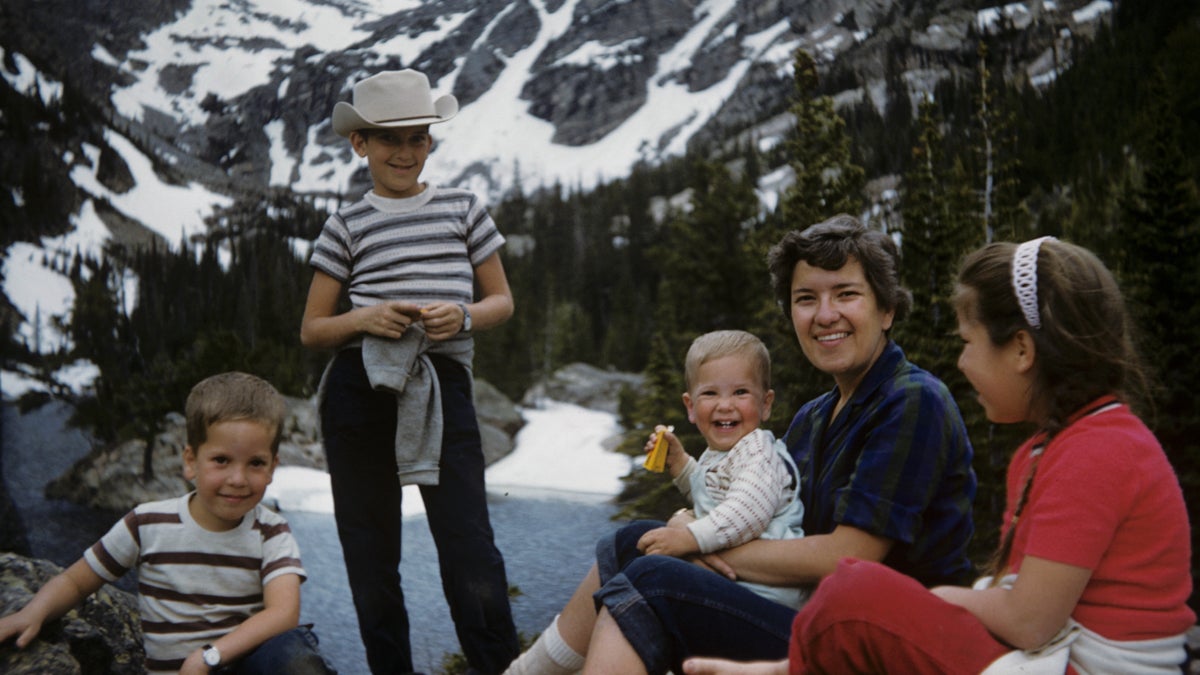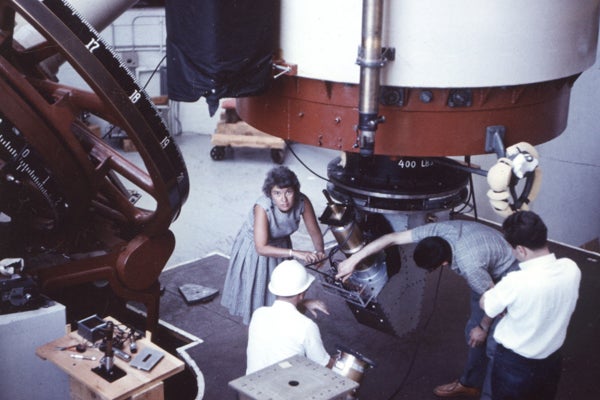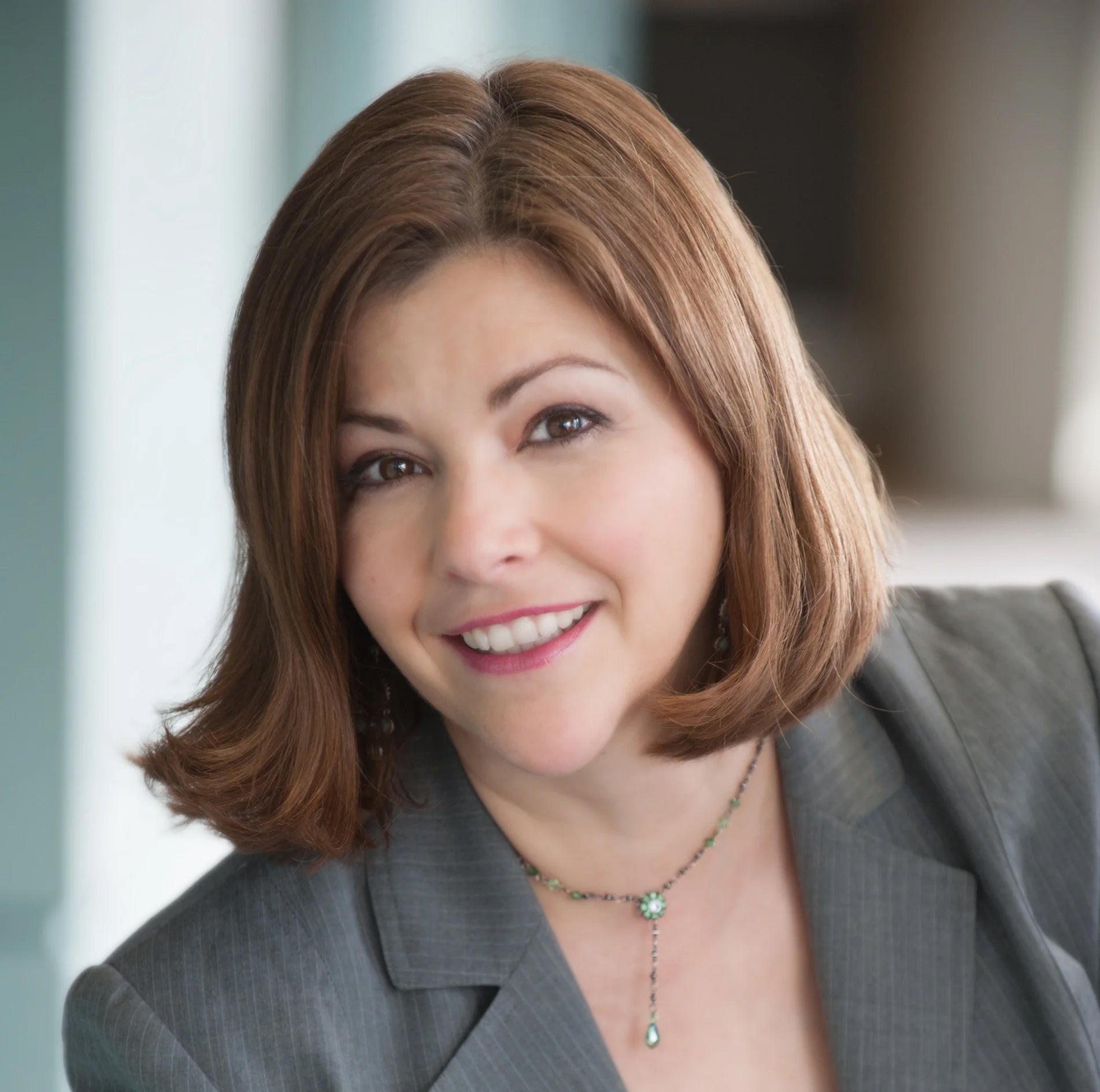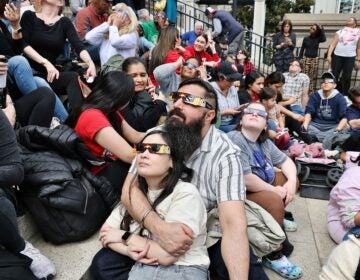Vera Rubin’s son reflects on how she paved the way for women
Listen 5:47
Vera Rubin at Rocky Mountain National Park with her children in 1961. From left to right: Karl, Dave, Allan, Vera, and Judy. Vera is 33. (Courtesy of Allan Rubin and the Rubin family)
His mother wasn’t sure what to do, and the Rubin family was weighing her options around the dinner table. It was 1975, and astrophysicist Vera Rubin had been invited to give a lecture to the Washington Philosophical Society – at the Cosmos Club, a prestigious private club. This was a great honor – but at the time, women were not allowed to enter the club through the front door.
Allan Rubin, the youngest of four children, was a teenager at the time.
“I said she should walk through the front door and say she was a man,” he recalled. His mother didn’t take his advice. She used the side door. “I was surprised,” said Rubin. “That was uncharacteristic of her to back down like that.” Vera Rubin later told her son she should have taken his advice.
This is the only time Allan Rubin remembers his late mother backing down.
Vera Rubin, the scientist credited with proving the existence of dark matter, died in December.
She’s remembered not just for work that changed our understanding of the make-up of the universe, but also for breaking down gender barriers with stubborn and quiet persistence from an early age.
Born in 1928, she pursued a career in astronomy even though teachers warned that as a woman, it would be best to stay away from science. She had to look hard to find a graduate astrophysics program that admitted women. She eventually joined Carnegie Institution, where she did her most ground-breaking work in the 1980s.
Allan Rubin knew as a small child that when his mother wasn’t home, he knew she was out, observing the stars with a telescope. Her work was always strewn all over the dining room table – and conversation around the dinner table revolved around science and astronomy. But it took him a long time to realize just how important and valuable his mother’s work was.
“I didn’t understand until I left home how much of a name she had made for herself. To me, she was my mom,” said Rubin. “I remember when I was a post doc, somebody introduced me, ‘this is Allan Rubin, his mother discovered dark matter,’ and I said ‘no she didn’t.’
Rubin says his response was fueled by his belief as a scientist that no one person discovers anything. “But also, to me, she’s my mother,” he admitted.
He says she often talked about the many challenges she faced simply because she was a woman.
“At times, she was angry, she was angry at the slow pace of change,” recalled Rubin. During an admissions interview at Swarthmore, his mother told the interviewer that she was interested in studying science. The interviewer tried to steer her away from this major, and asked if she had any other interests. Rubin answered she also liked art.
“The interviewer said ‘have you considered a career drawing astronomical paintings, or painting astronomical objects,’” said Allan Rubin. “Have you considered a career in painting astronomical objects” became a running joke in their family.
Rubin said his mother was really upset when her only daughter, the late Judith Young, was told by a college advisor to not worry about not getting into the first graduate school of her choice, because she could always get married. Too much time had passed, and too little change had happened.
Despite being a pioneer for women scientists, Allan Rubin says his mother’s biggest love was always her work.
“What she most liked to do was observe the heavens, that was the most important thing to her. She recognized she had some responsibility to push for other scientists as well, but maybe a little bit more reluctantly at first.”

Rubin recalled an episode that illustrates his mother’s resolve in pursuing her career goals. When she was teaching at Georgetown, she learned that somebody at Carnegie Institution was building a new image tube, which could really speed up her work, and she really wanted a job there.
She was worried that the astronomers working at Georgetown and Carnegie were too close-knit a community, and that Carnegie wouldn’t accept her in order to not offend Georgetown.
“So, she quit her job at Georgetown, and drove across town to Carnegie and got a job,” said Rubin. “This is the lesson I wished I learned, and maybe I have learned a little bit. If you see what you want, just go out and do it.”
WHYY is your source for fact-based, in-depth journalism and information. As a nonprofit organization, we rely on financial support from readers like you. Please give today.







